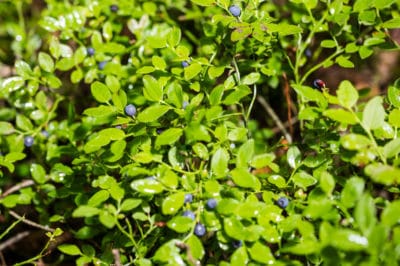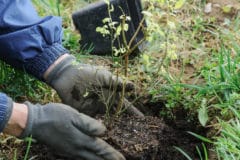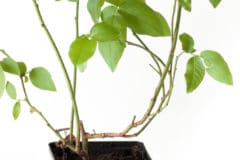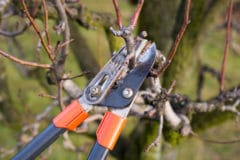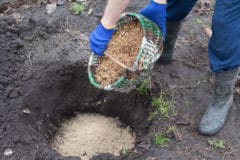Benefits of Pruning Blueberry Bushes
Pruning blueberry bushes is not just for keeping the bush size under control. Pruning also keeps your blueberry bushes healthy and encourages new stem growth. The following are a few of the benefits of pruning blueberry bushes:
- Prevents over cropping
- Increases the size of the blueberries
- Removes dead, woody branches
- Removes diseased wood.
- Decreases insect infestations.
- Eliminates undesirable stem growth.
Pruning Tools and Tips
Most of the time, you prune blueberry bushes when they’re dormant during the fall and winter. Wait until the leaves fall off the bushes before pruning. If your bushes are large with thick canes, use long-handled loppers for cutting tough stems. Smaller pruners work well for touch-up work or for pruning young blueberry bushes. When you cut the stems, try to make them flush without leaving any stubs. You don’t have to treat the cuts after pruning.
Steps for Pruning Established Blueberry Bushes
Once your blueberry bushes lose their leaves, usually in November or March, begin pruning. Follow these steps for the correct pruning techniques:
- Before pruning, visualize a circle about 18 inches in diameter around the bush.
- Begin pruning from the ground up, removing any shoots that are sprouting outside the circle.
- Remove any canes that are angled toward the ground.
- Remove any crossover canes that grow across and through the bush. This should leave only upright branches.
- Open the center of the bush to remove old canes and improve air flow. Old canes appear gray and sometimes have fuzzy foliose lichen growth on them.
- Thin out any clumps of small, matchstick sized, lateral growth. Also trim any canes that are too tall.
- Remove one-third of the flower buds while pruning. It is tempting to leave the buds, but it actually stresses the blueberry bush. This results in a reduced yield in later years.
The goal of your pruning should be to have several trunks on your blueberry bush with healthy canes of varying ages sprouting from the ground. As you remove old canes, new ones will replace them.
Pruning Young Blueberry Bushes
When your blueberry bushes are in their first year, remove all the flower buds. You can either cut them off the branches or rub them off between your fingers. In future years, thin the flower buds to promote the growth of the bush. This is essential for establishing a full-grown blueberry bush.
- First year – Avoid berry production entirely. Remove all the buds when you plant your bush, allowing the vegetation to grow. By the beginning of the next year, more buds will grow.
- Second year – Prune any low-lying shoots and crossovers. Keep only the healthy, straight shoots. You can leave a few buds for berry growth, if the bush grew well in the first year.
- Third year – By the third year, your blueberry bushes should be well established. At this point, they can produce a large crop of berries. It’s still important to prune your bushes and remove about 50 percent of the buds. Choose a few basal shoots growing from the ground, allowing them to grow. These will replace old canes that you prune in subsequent years.
It seems strange that you need to trim off branches and blossoms to produce more fruit on your blueberry bushes, but it’s essential that you do just that. After pruning, you can add organic mulch around your bushes to promote new growth. If you drink coffee, save your coffee grounds and spread them around the base of your blueberry bushes. The grounds are acidic, which blueberries love.
